 "/>
"/>
 "/>
"/>


Timothy Baird
Professor and Chair of
Landscape Architecture at Cornell University
Adjunct Principal, Landworks Studio, Inc.
https://www.landworks-studio.com/
University of Pennsylvania, MLA
Louisiana State University, BLA
作為美國常春藤藤校中唯一擁有景觀/建筑本科的Cornell在Landscape Architecture排名位居前茅。景觀系位于College of Agriculture and Life Science (CALS)這學(xué)院下,在全美最優(yōu)秀的農(nóng)學(xué)院的強(qiáng)大支持下,構(gòu)建了豐富資源和教學(xué)體系。由系主任Timothy Baird的帶領(lǐng)下,景觀系研究方向非常多元,包括Green Infrastructure、Landscape Preservation、Cultural Landscape 與 Urban Design。國際化的合作與交流也為Cornell的畢業(yè)生提供了的扎實(shí)的基本功和廣闊的視野。
帶著大家對于景觀教育的好奇,建道ArchiDogs對談康奈爾景觀系主任Timothy Baird,一起聊聊美國藤校的景觀教育。
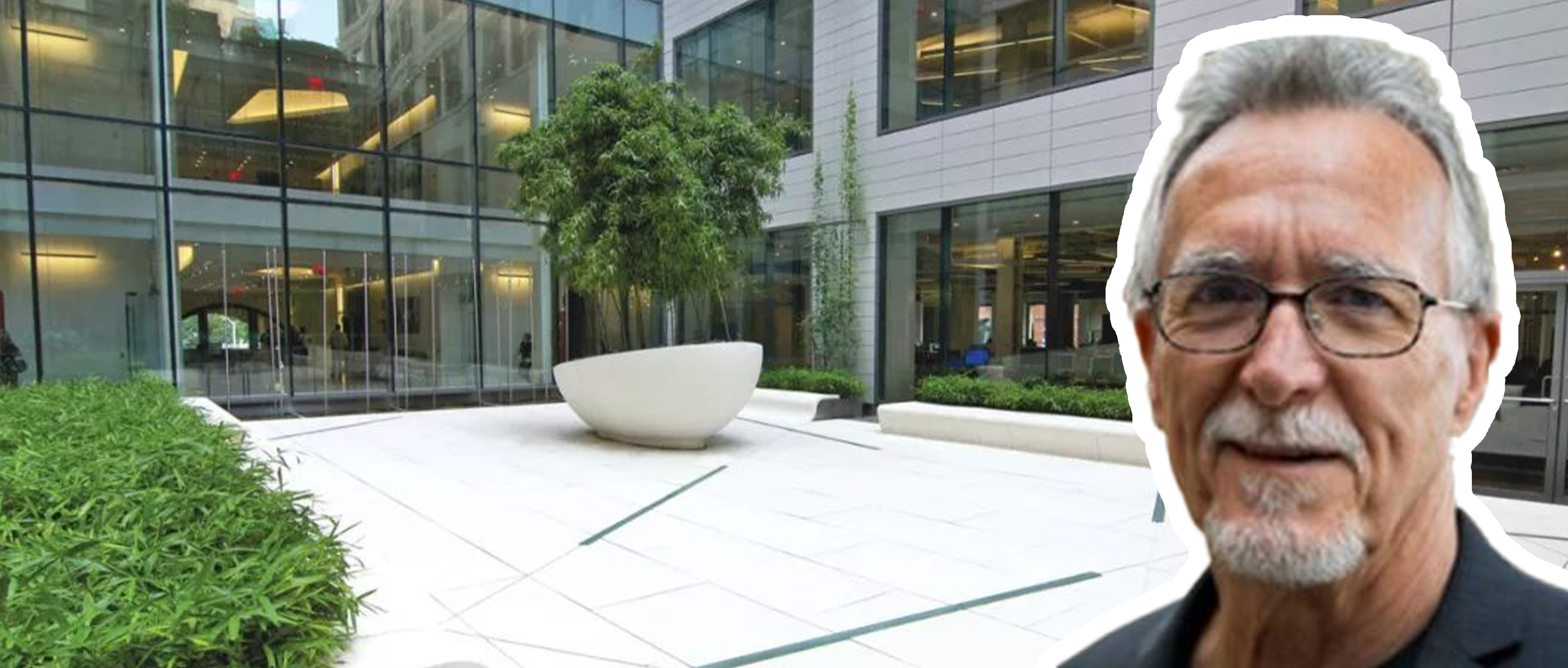
01 / People
人物素描

Timothy Baird
Professor and Chair of
Landscape Architecture at Cornell University
Adjunct Principal, Landworks Studio, Inc.
https://www.landworks-studio.com/
University of Pennsylvania, MLA
Louisiana State University, BLA
代表作品
200 5th Avenue | New York, NY
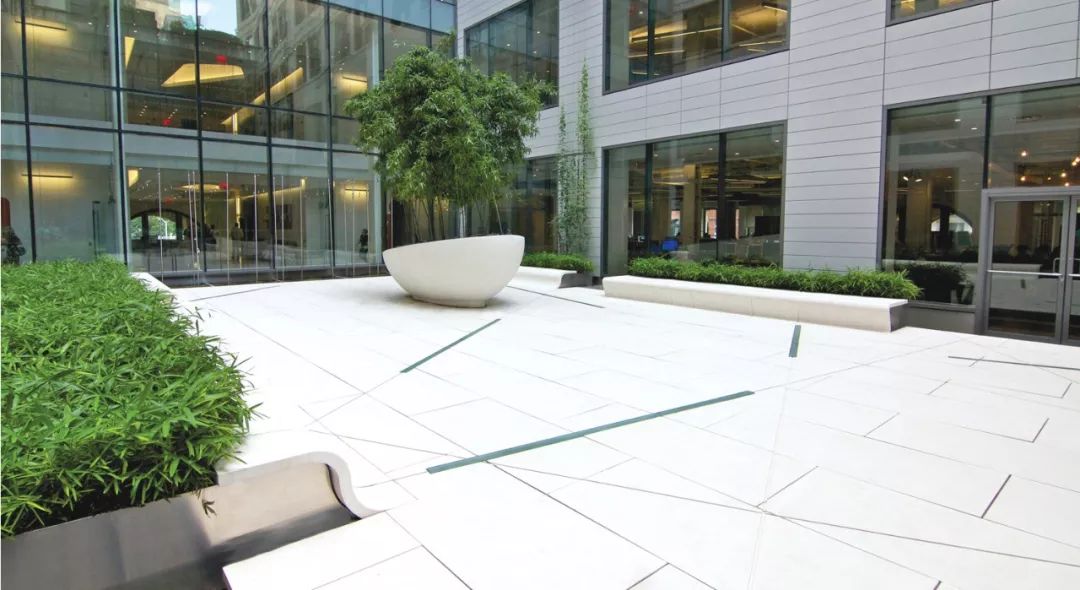
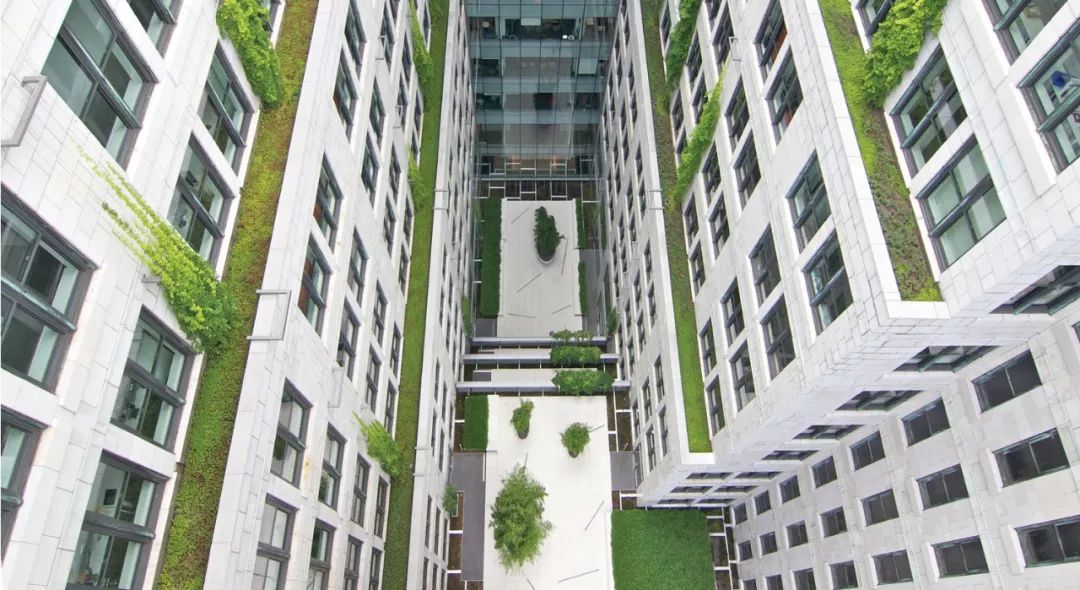
02 / Teaching at Cornell
任教康奈爾大學(xué)
█ Cornell的風(fēng)景園林系隸屬于農(nóng)學(xué)院(Cornell CALS,College of Agriculture and life sciences),該系與其他隸屬于設(shè)計(jì)學(xué)院的風(fēng)景園林項(xiàng)目(比如賓大,GSD)有什么不同?
Cornell's landscape architecture department is under Cornell CALS - College of Agriculture and Life Sciences. How does that make Cornell's landscape architecture different from those who are under Design Schools (such as UPenn, GSD)?
T:康奈爾大學(xué)的景觀專業(yè)源于農(nóng)業(yè)和園藝業(yè),后來才有了設(shè)計(jì)學(xué)院。很多人都在問我們?yōu)槭裁床话岬皆O(shè)計(jì)學(xué)院去?我們將這些非常棘手的問題稱為“雷區(qū)”,因?yàn)閮烧吒饔欣住km然設(shè)計(jì)學(xué)院能使學(xué)生沉浸于設(shè)計(jì)工作室文化(studio culture)中,讓他們獲得認(rèn)同感。
但實(shí)際上,康奈爾大學(xué)的學(xué)生可以在任何一個(gè)學(xué)院上課,教師也可以在任何一個(gè)學(xué)院和系中進(jìn)行研究。因此,我們在哪里都可以做高質(zhì)量的工作。學(xué)習(xí)非科學(xué)的(設(shè)計(jì))學(xué)科本身是非常耗時(shí)且困難的。所以,經(jīng)常與其他設(shè)計(jì)師在一起探討,并觀賞他人的作品對于學(xué)習(xí)該專業(yè)是非常有幫助。
Landscape Architecture generally started in agriculture and horticulture then developed design schools. Some people asked us, “Why don't we move to the design school?”. There are a lot of pros and cons either way. Being in a design school is very good for immersing students in the studio culture and understanding that sort of commitment.
However, Cornell students can take courses anywhere, and faculty can do research across any college or department. We are still able to do quality work no matter where we are. It may be very difficult to learn something that is not a science, such as design. Thus, it is helpful to be around other designers and see their works on exhibit.
█ Cornell的景觀本科(BSLA)與景觀研究生(MLA)在課程設(shè)置上的特色分別是什么?景觀研究生會更偏向研究嗎?
What are the differences and features of Cornell's undergraduate landscape architecture (BSLA) and graduate landscape architecture (MLA) courses? Is MLA more research-oriented?
T:其實(shí)本科生和研究生的課程設(shè)置基本相同,教學(xué)老師也都是一樣的。但對于學(xué)生工作量的要求,以及對設(shè)計(jì)理解的深度有不同的期望與標(biāo)準(zhǔn)。一般情況下,研究生的課程以研究為中心,課題需要更嚴(yán)謹(jǐn)?shù)膶W(xué)術(shù)理論支撐,并對其要有更深入的探討。無論本科生還是研究生的設(shè)計(jì)課程,我們都會從一個(gè)主題和需要實(shí)現(xiàn)的目標(biāo)開始。
我們是常春藤聯(lián)盟唯一提供風(fēng)景園林學(xué)本科學(xué)位的大學(xué)。我們的建筑學(xué)也是常春藤聯(lián)盟中唯一招收本科生的大學(xué)。因此,我們在這兩個(gè)專業(yè)上擁有相當(dāng)杰出的專業(yè)能力。
The curriculum and faculty for both programs are generally the same, but the amount of work and the depth of understanding are different. The graduate students’ work is expected to be more rigorous and to be more intensively research-based. Their studios are all research-driven. But no matter undergraduate or graduate, all studios begin with a research question on a topic and a set of goals to accomplish.
Cornell is the only Ivy League university that has undergraduate degrees in both landscape architecture and architecture. Thus, they are very unique in that respect.
█ 康奈爾大學(xué)和上海交通大學(xué)有合作,目前或者未來還會與哪些中國院校進(jìn)行合作?
There was a collaboration between Cornell University and Shanghai Jiao Tong University. What is the future plan for Cornell's landscape architecture department regarding international collaboration?
T:康奈爾大學(xué)與上海交通大學(xué)的風(fēng)景園林系已經(jīng)有50年的合作歷史了。這些年,我們景觀系的學(xué)生和交大的學(xué)生進(jìn)行了一次聯(lián)合教學(xué)的課程。我們把康奈爾的學(xué)生帶到上海,然后他們把交大的學(xué)生帶到康奈爾。
Cornell has had a relationship with the landscape architecture department at Jiao Tong University for many years. We had an experimental class of collaborative teaching a few years ago. We brought students here, and they brought students to Cornell.
█ 兩所學(xué)校未來會做聯(lián)合課程或者聯(lián)合學(xué)位嗎?
Is it possible for both universities to share the studio classes?
T:上海交大很希望能促成這樣的合作,但這是一個(gè)艱難的過程。我們目前并沒有足夠的教師來承擔(dān)這項(xiàng)工作,但將來會考慮的。
目前,我們正在討論求學(xué)期間出國學(xué)習(xí)(study aboard program)的合作機(jī)會。我認(rèn)為,讓外國的學(xué)生來中國學(xué)習(xí)會是一種很棒的體驗(yàn)!我們系有很多中國學(xué)生想回中國進(jìn)行暑期實(shí)習(xí),因此我也在中國為他們物色實(shí)習(xí)機(jī)會。中國現(xiàn)在有很多新興的本土設(shè)計(jì)公司。例如在深圳,上海和洛杉磯都設(shè)有工作室的Lab D + H。它是由我們的校友鐘惠城與他的朋友們一同創(chuàng)建的。
That's exactly what they would like to see implemented, but it is a very difficult thing to do. We don’t have enough faculty to take over that responsibility, but it's something that we were thinking of in the future for sure.
But for now, we are looking at study abroad opportunities, such as exchange programs. Especially, I think having foreign students come and study one semester would be great. A lot of Chinese students want to go back to China for internships during the summer break. Thus, I'm looking at firms here for them. There are so many new young emerging Chinese firms like Lab D+H in Shenzhen, Shanghai, and Los Angeles which was co-founded by our Cornell alumni, Huicheng Zhong.
█ 您本人畢業(yè)于賓夕法尼亞大學(xué)和路易斯安那州立大學(xué),這兩個(gè)學(xué)校的教學(xué)對您目前在康奈爾的任教與景觀實(shí)踐有何影響?
You graduated from Upenn and LSU. How did the teaching of these two schools influence your current teaching at Cornell and professional practice?
T:路易斯安那州立大學(xué)(LSU)的教學(xué)理念和應(yīng)用技術(shù)都非常先進(jìn)。正如他們的教學(xué)理念 —— 一位真正優(yōu)秀的設(shè)計(jì)師,需要在設(shè)計(jì)的同時(shí)知道如何實(shí)現(xiàn)他的作品。
畢業(yè)后我在費(fèi)城工作,并在四年半后獲得了景觀建筑師的執(zhí)照。可惜我在經(jīng)濟(jì)衰退的時(shí)期失業(yè)了,于是我決定去賓大深造。賓大擁有一個(gè)完全不同的教學(xué)系統(tǒng),他們側(cè)重于運(yùn)用自然與自然科學(xué)合作的生態(tài)規(guī)劃和設(shè)計(jì)。同時(shí),賓大還邀請了一些相當(dāng)優(yōu)秀的設(shè)計(jì)師,例如賓大風(fēng)景園林設(shè)計(jì)的系主任伊恩·麥克哈格(lan McHarg)、勞里·奧林(Laurie Olin)、鮑勃·漢娜(Bob Hanna)等人,由他們重組景觀系并設(shè)置課程。
我認(rèn)為教育背景的結(jié)合有利于我在景觀方面任教與實(shí)踐。其實(shí)任何一所厲害的高等學(xué)府都會教授你很多東西,你還有機(jī)會結(jié)識來自全球的明星設(shè)計(jì)師們。我認(rèn)為,與不同的設(shè)計(jì)師工作能幫助我們學(xué)習(xí)到更多不同的設(shè)計(jì)理念。
LSU had a very great design focus with technical competence. That was what they wanted to see in their graduates – A good designer should know how to craft ideas into built work. Therefore, that was my foundation.
I went to work in Philadelphia, and I was licensed after four and a half years. Unfortunately, I was laid off because of a recession. I eventually got into Penn to start my graduate degree. I experienced a different teaching system. Penn focuses on ecological planning and design. Especially planning focuses on engaging natural scientists and social sciences. Program Chair Ian McHarg also hired people who formed and re-programmed landscape architecture, such as Laurie Olin and Bob Hanna, who were really good designers.
I think the combination of the educational background from LSU and Penn was a good foundation. Any good graduate school offers its students opportunities to meet and learn a lot from many outstanding designers. I always felt that I needed to work with as many different designers as possible to gain multiple design perspectives.
█ 您曾經(jīng)教過一個(gè)景觀結(jié)合虛擬現(xiàn)實(shí)技術(shù)來研究巴西貧民窟的設(shè)計(jì)課,您如何看待新技術(shù)對于景觀行業(yè)的影響?
We know that you had a new studio that engaged students in the study of one Brazilian favela through virtual reality (VR) technology. What’s your attitude towards new technology in landscape architecture? And how can we incorporate them better with design studios?
T:一般情況下,在設(shè)計(jì)課開始時(shí)你就需要去勘測場地;并在有設(shè)計(jì)想法之后再回去一次,即二次勘測。但條件限制了我們只能在有想法了之后再去實(shí)地。因此,在課程開始的初期,我們利用虛擬現(xiàn)實(shí)技術(shù)代為勘查,盡可能地使我們的學(xué)生對場地有較為深入地認(rèn)識。我們也確實(shí)擁有一個(gè)這樣地虛擬環(huán)境能夠讓學(xué)生身臨其境地勘測場地。
比如在巴西里約熱內(nèi)盧州的圣瑪爾塔貧民窟。那里地形地質(zhì)條件復(fù)雜,卻被搭建了成群的非規(guī)范房屋。其實(shí),在發(fā)展中國家有很多類似這樣的案例,因此我們需要研究它。現(xiàn)在,學(xué)生只需要戴上VR眼鏡,就能在虛擬的環(huán)境中進(jìn)行移動(dòng)和感知場地。抬頭看到建筑物,低頭看到鋪路。這種感覺真的太棒了!課程結(jié)束后,我們會對學(xué)生進(jìn)行調(diào)查以了解他們對該過程有什么建議和感想。
對于該設(shè)計(jì)課程與技術(shù)的整合,目前還停留在勘測收集數(shù)據(jù)的階段,以后還會延伸到設(shè)計(jì)階段。我們會向前邁進(jìn),把設(shè)計(jì)放進(jìn)VR眼鏡中感受其帶來的未來感。在未來,你的設(shè)計(jì)就在眼前!
Obviously, you go to see the people and the site in the beginning and then go back after developing proposals. However, we could only afford to take one trip to Brazil. Thus, we did a virtual site visit that used virtual reality as a proxy (for the beginning part). Fortunately, we had this virtual environment that students could enter into and move through to better understand the neighborhood before we traveled there.
The site was the Santa Marta Favela in Rio de Janeiro, Brazil. The people made communities organically on land that was forbidden for development due to very steep slopes. There are many informal settlements in developing countries because of the high cost of local housing. During the studio, our students could put on the VR headset at any time and move through the site virtually to collect data. It is amazing because you can look up and see the building. You can also look down and see the paving. After our students finished the course, we surveyed their feelings about that process.
We are not only incorporating technologies into studios in the site inventory phase but also through design phases. VR gives us an impression of what it would be like at eye level to be there in person.
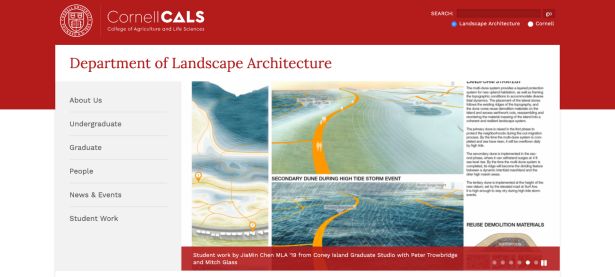
Department of Landscape Architecture
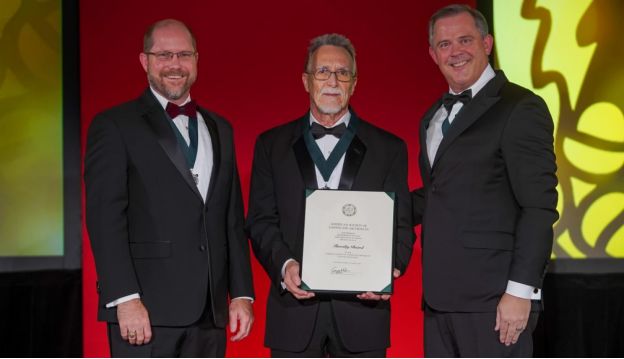
Tim Baird,professor,and chair of the Department of Landscape Architecture joined the Council of Fellows for the American Society of Landscape Architects at a ceremony Oct. 21 in Philadelphia.
03 / Design Practice
設(shè)計(jì)實(shí)踐
█ 您在教學(xué)的同時(shí)也在Landworks studio擔(dān)任設(shè)計(jì)總監(jiān),您是如何平衡教學(xué)與實(shí)踐的?
While teaching design, you are also an Adjunct Principal at ‘Landworks Studio’. How do you balance teaching and practice?
T:我很榮幸在2014年能夠加入Landworks Studio。有時(shí),我自行選擇項(xiàng)目并參與,這對我來說是一個(gè)理想的情況。教學(xué)和實(shí)踐有時(shí)很難兼顧,因此保持兩者平衡是很重要的。我希望在將來能有更多的時(shí)間投入到建筑實(shí)踐中。當(dāng)然,我的首要責(zé)任還是對景觀系的學(xué)生負(fù)責(zé),將我個(gè)人實(shí)踐和學(xué)術(shù)經(jīng)驗(yàn)傳授給他們。
我現(xiàn)在經(jīng)常討論的議題是“基于設(shè)計(jì)的研究”。我們通過設(shè)計(jì)來完成研究。研究是一個(gè)迭代過程,在繪圖、建模和反復(fù)修改中形成有效的研究方式。對我來說,優(yōu)秀的教師理應(yīng)創(chuàng)造出具有創(chuàng)造性的作品,而不僅僅是通過學(xué)術(shù)出版來獲得任期,這一點(diǎn)很重要。
I joined Landworks Studio in 2004 and have continued to practice with the firm in a part-time capacity depending on my workload as department chair... I'm able to work as little or as much as I want, which is an ideal situation for me. Balancing the position between an administrator and professor is difficult but important. I hope I will eventually have more time to devote to practice once we have made several important improvements to the department. My first responsibility is to the department and students. On the other hand, what I bring to students is my practice experience along with my academic experience.
One of the things I talked about at the Idea of Design Education Symposium at SJTU is research by design. It's the idea that research can be done through the act of design. It is a constant iterative process where you're drawing and modeling to test ideas, materiality, formal strategy, ecological and cultural sensitivity, and you're continually changing and revising your design. That is a valid form of research for me. Faculty should be able to get tenure through creative work, not just through research that results in publications.
█ 在中國實(shí)踐的過程中,你是如何理解當(dāng)?shù)氐臍v史與文化?
When you are practicing in China, how can you understand a site with a long history and culture?
T:理解當(dāng)?shù)匚幕瘜ν鈬藖碚f是至關(guān)重要的。景觀建筑師總是需要在不同的地域進(jìn)行實(shí)踐,第一步就是了解該地的歷史與文化。在團(tuán)隊(duì)中,我們非常需要有人能幫助我們了解當(dāng)?shù)匚幕?/span>
我們有時(shí)會比建筑師多做一些前期工作。建筑往往不常受場地氣候的限制,但是景觀設(shè)計(jì)就必須結(jié)合當(dāng)?shù)氐沫h(huán)境與氣候。場地分析會暴露當(dāng)?shù)丨h(huán)境氣候的問題,因此我們的設(shè)計(jì)必須經(jīng)過場地分析,結(jié)合當(dāng)?shù)丨h(huán)境,并在歷史、文化上加以理解。尤其是在陌生的文化中,你所作的設(shè)計(jì)可能會對原住民有所冒犯。
我們的校友鐘惠城描述過他的一段有趣經(jīng)歷。他有一位注重風(fēng)水的客戶要求噴泉噴頭必須是奇數(shù)。也許在將來我們會在設(shè)計(jì)課程中加入有關(guān)“風(fēng)水”的教學(xué),估計(jì)很多中國學(xué)生會比我們教的更好!
Any time one enters a different culture you have to learn about it. Landscape architects are always moving into different territories, and the first step is to understand that territory. You need people on the team to help you with it. On our teams, we have Chinese employees and others who act in this role to help us and guide the projects. We also rely on local consultants who assist in understanding the local culture, ecology, and customs.
We sometimes need to do more than architects because we have to understand the site. There are many things ecologically that you have to understand historically, culturally, especially in a different country.
One of our alumni, Huicheng Zhong, had a client with a project in Shenzhen that required Fengshui. Huicheng showed me that the fountain jets had to be odd numbers. Maybe we should teach a course in Fengshui at Cornell and we have many Chinese students who could teach the course better than the faculty!
04 / How to apply to Cornell
留學(xué)申請&作品集建議
█ 作品集是學(xué)生申請中很重要的一部分,你希望在學(xué)生的作品集中看到什么?什么樣的作品集能讓你們感到印象深刻?
Portfolio is an important part of a student's application. What would you expect to see in a student's portfolio? What kind of portfolio would make you feel impressed?
T:我們會綜合評審作品集和文書,從中判斷申請者的設(shè)計(jì)能力。基本上我們會希望這個(gè)申請者有一個(gè)特定的主題,他/她對于這個(gè)主題有深入的探討,并有相應(yīng)的圖紙和模型表達(dá)。這個(gè)主題可以是一個(gè)景觀正在面臨的重大問題,如氣候變化。我們希望他/她能夠挖掘設(shè)計(jì)背后的理論和想法。
We review their portfolios and personal statements to get a better understanding of the student’s capabilities. We look for someone who has creative potential and who has possibly focused on a specific topic with a deeper understanding. Of course, nice drawings and models, and other examples of creative activity, are expected. For example, this topic could be climate change.
█ 如果你們對某個(gè)學(xué)生特別感興趣,會發(fā)出面試邀請嗎?
If you are very interested in some students from the portfolio, will you give them an interview?
T:并不會。我們都是基于學(xué)生提交的內(nèi)容來決定的。申請康奈爾的門檻很高。學(xué)生們的申請材料會首先進(jìn)入篩選系統(tǒng),語言分?jǐn)?shù)是首要的考量標(biāo)準(zhǔn)。如果語言分?jǐn)?shù)未標(biāo),則會被直接刷掉。
No. acceptances are based on what's submitted. The entrance requirements for Cornell are pretty high. Cornell will separate out the low TOEFL scores prior to our admissions committee sees the applications.
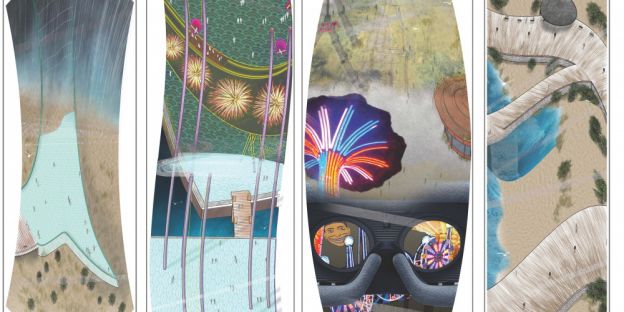
Sasha Anemone and Nell Crumbley LA6010 studio final review
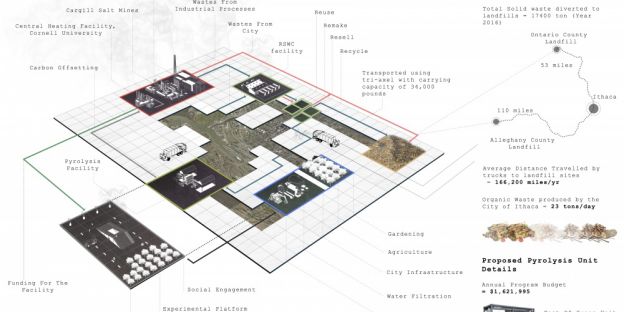
Student work
? Parth Divekar MLA '18 from 3rd Year MLA Studio with Margot Lystra
05 / Advice to students
對年輕學(xué)生的建議
█ 您對當(dāng)今景觀設(shè)計(jì)行業(yè)有怎樣的看法?對于這一代年輕學(xué)生和設(shè)計(jì)師,您希望他們在做設(shè)計(jì)的時(shí)候從哪些方面去考慮?
What do you think of the landscape architecture design today? What aspects do you expect the young generation to consider when designing?
T:如果他們想繼續(xù)深造,我的第一建議是去康奈爾大學(xué)(笑)。當(dāng)然現(xiàn)在還有很多其他的好學(xué)校。
首先你要充滿好奇心,有批判性思維和職業(yè)道德。你要能夠正確看待任何人的作品并對其進(jìn)行批判性思考。其次,要有協(xié)作精神。這個(gè)時(shí)代的項(xiàng)目涵蓋得越來越復(fù)雜,包括生態(tài)、社會科學(xué)、歷史和文化等。學(xué)會與來自不同領(lǐng)域的專家協(xié)同工作是尤為重要的。當(dāng)然,技術(shù)也很重要。
First of all, you need to be a curious and self-critical thinker with a developed work ethic. Collaboration is also important. Landscape projects today are very complex and require teams of experts to realize them. This means you must be willing to collaborate with a general understanding of ecology, social sciences, history, culture, all of that. Certainly, you also need to master technology.
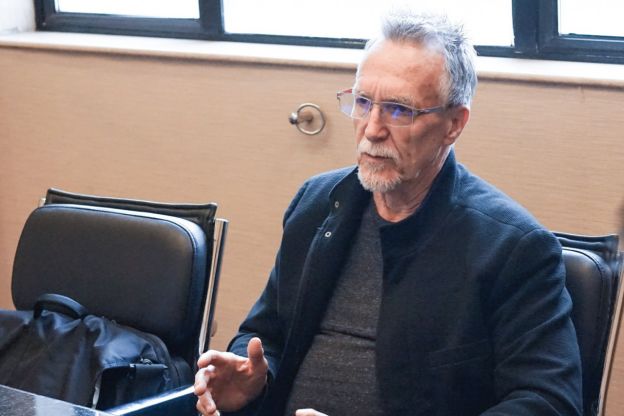
Interview with Timothy Baird ? ArchiDogs
訪談|Kelly Zhu, Luke Lu, Chenliang Ma
翻譯/文案|Kelly Zhu, Yiwei Huang
校對|Yiwei Huang, Sherry Li, Yuxin Pan
編輯|Winnie
審核編輯|Yibo
版權(quán)?建道筑格ArchiDogs,轉(zhuǎn)載請聯(lián)系media@archidogs.com
若有涉及任何版權(quán)問題,請聯(lián)系media@archidogs.com,我們將盡快妥善處理。

